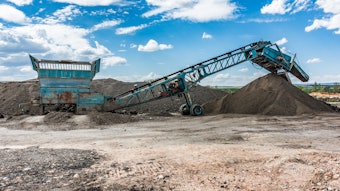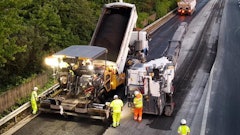
There are many global efforts actively attempting to improve the environment, by using cleaner, more eco-friendly products in every area of life and business. This includes the construction industry, which has been urged to move toward environmentally positive methods. However, these changes can’t be reasonably made without a significant amount of incentive. This is where the government and its funding comes into play.
Buy Clean is a federally established initiative that urges change in the construction industry and provides incentives for companies to participate through positive reinforcement.
What is “Buy Clean”
The federal initiative was placed by President Biden in Executive Order 14057, and issued at the end of December 2021. This program intended to promote and incentivize the use of lower embodied carbon emission construction materials. With the initiative pushing for lower-carbon materials, the government is offering federal funding in order for manufacturers and construction companies to access this kind of material while reducing the potential increase in material costs. Some states have partnered with the federal government to support the progressive legislation. When a construction company decides to use low-carbon materials, it has the opportunity apply for assistance grants.
Joseph Shacat, director of sustainable pavements at NAPA, said, “‘Buy Clean’ is a catch-all phrase for a number of federal, state, and local policies related to management and reduction of embodied carbon emissions.”
He discussed the varying degrees to which these policies are focused, and suggested that some are centered on transparency while others, “affect procurement decisions through incentives or requirements related to the carbon footprint of asphalt mixtures and other construction materials.”
Who Does This Impact
This legislation primarily affects manufacturers of materials, asphalt being just one of many.
As Shacat mentioned, some policies under Buy Clean focus on the transparency of companies’ Environmental Product Declarations (EPDs). An EPD essentially gives a breakdown of the energy used.
To go a little bit more in-depth, the EPD presents how much carbon the company is putting out when manufacturing things like:
- Asphalt
- Concrete
- Steel
- Flat glass
Not only does the government want to keep track of the carbon emissions from the manufacturing process, but also takes the whole life cycle of emissions into consideration.
The Buy Clean policies apply to any and all projects that are federally subsidized. Shacat said that while a company might not be part of the chunk of states that are participating in the initiative alongside the federal government, it is still likely to face Federal agencies that have their own policies. The company may also run into private developers who will request EPDs and possibly ask what that company can do to reduce the carbon used.
Buy Clean affects a larger pool of construction people than it may initially seem. The general idea is to extend this policy to as many people as possible in order to get the best positive change and results.
Other than the manufacturers, the legislation intends to make a positive impact on the environment. In return, the goal is an overall net-positive impact on communities where these projects are built.
The Shifts
The Buy Clean policy makes it clear that agencies are willing to pay more for products with lower carbon emissions.
“This is changing the market from a strictly low-bid environment to one in which greenhouse gas emissions at the asphalt plant, and up the supply chain, will have an effect on procurement and project delivery,” said Shacat.
The legislation aims to change the way that companies operate and think. Before the policies, it would have been easier to not bother with low embodied carbon emissions materials. With the policies in place, it should encourage companies to make the transition to materials with lower emissions. Thus creating the shift in market demands.
The Future
These policies aren’t going to change any time soon. While some tweaks to overall guidance may be made, the core values of the Buy Clean policy will remain.
Nile Elam, vice president of government affairs at NAPA, said, “Regardless of the political headwinds in Washington during the next presidential election, or the makeup of Congress in the years ahead, these policies will be present in varying capacities.”
“Just like we anticipate some states adopting their own policies through their legislatures and governors, we expect the same at the federal level, regardless of who is in charge,” Elam continued.
Elam suggested that an increasing number of companies will become preemptive in their methods to avoid the risk of their materials losing prominence or getting left behind. Companies will want to stay relevant and ensure their materials are a good option for infrastructure jobs. In order to stay competitive, it will be key to stay current on all the changes happening in the industry.
Even though the policies are already in place, and will remain for years to come, the journey won’t be short and it won’t be easy. These first steps are will improve transparency about the level of carbon emissions that companies are putting out.
What This Means for the Asphalt Industry
Asphalt is one of the main targeted materials in the Buy Clean Initiative. Shacat acknowledged that there are concerns circulating in the industry about the quality of mixes and questioning if it’s really worthwhile.
“The reality is that agency specifications are not going away. So, in the near term, the rules by which we design and produce asphalt mixtures are not going to change,” Shacat said.
While the industry hasn’t yet had time to perfect the quality of its low-carbon mixes, there will be plenty of time for it to catch up and produce better materials.
“As agencies move toward Balanced Mix Design (BMD), ... there will be an opportunity for [the] industry to innovate and further reduce emissions if agencies relax volumetric requirements during the shift to BMD specifications,” Shacat added.
Now is the best time to get started. Companies that begin the transition now will have an advantage over those that choose a wait-and-see approach. As Elam mentioned, this policy isn’t going anywhere, so the sooner the better.
NAPA and the various state asphalt pavement associations have ample resources to aid companies in their transition.



![Img 1707[56]](https://img.forconstructionpros.com/files/base/acbm/fcp/image/2023/04/IMG_1707_56_.6437076c97961.png?auto=format%2Ccompress&fit=crop&h=75&q=70&rect=0%2C462%2C1920%2C1080&w=75)

![Img 1707[56]](https://img.forconstructionpros.com/files/base/acbm/fcp/image/2023/04/IMG_1707_56_.6437076c97961.png?auto=format%2Ccompress&fit=crop&h=191&q=70&rect=0%2C462%2C1920%2C1080&w=340)


![Glp Porsche 072723 465 64ee42287c29e[1]](https://img.forconstructionpros.com/files/base/acbm/fcp/image/2024/03/GLP_PORSCHE_072723_465.64ee42287c29e_1_.65e88b8589b9c.png?auto=format%2Ccompress&fit=crop&h=135&q=70&rect=0%2C520%2C2250%2C1266&w=240)





















